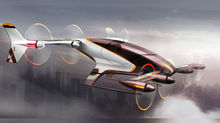DJI Drones Will No Longer Be Able To Fly In Restricted Airspace
- http://www.ledgergazette.com
- 20 nov. 2015
- 2 min de lecture
DJI Drones Will No Longer Be Able To Fly In Restricted Airspace[if lt IE 9]> <![endif]
StartFragment

But, this doesn’t include drone flights over national-security locations such as Washington, D.C. or other prohibited areas. The service provides information to commercial and hobbyist drone pilots. AirMap shows not only restricted areas around large and small airports, but also temporary flight restrictions (TFR) areas like wildfires, public events or visits from the President. The company said it is asking government officials world-wide to list other places where drones should be excluded. Free temporary unlocking will be available to DJI owners who are verified with a credit/debit card or mobile phone number. It will only be launched for North America and Europe for now while other regions will receive an update to airport data. In response, a few US lawmakers have proposed mandating geofencing technology.
DJI’s geofencing, however, can be switched off in a few cases.
You can bypass most of the system (national security areas withstanding), but you’ll need a verified account with DJI and a payment method on file.
Schulman continued: “We believe this major upgrade to our geofencing system will do even more to help operators understand their local flight environment, and to make smart, educated decisions about when and where to fly their drones”.
He said the company won’t allow users to disable geofencing in a few areas, including near prisons or in Washington, where drones are essentially banned.
A few air-safety advocates discounted DJI’s previous geofencing software, saying it was too easy for users with basic computer-programming knowledge to override the restrictions. 3DR incorporated these maps into its Solo UAV (above), so that if you open the app in a restricted area, you’ll see a yellow “warning” or red “don’t fly” circle.
“We’re not going to stop bad actors this way”, Mr. Schulman said.
The drone will, by default, not fly into or take off in locations that raise safety or security concerns, however as many authorised flight applications are approved, users who have verified DJI will be able to temporarily unlock or self-authorise flights* in a few of those locations.
The update, which will come with new DJI drones later this year or as a software update to existing drones, expands the list of restricted flight locations to include prisons and power plants.
EndFragment




























Commentaires